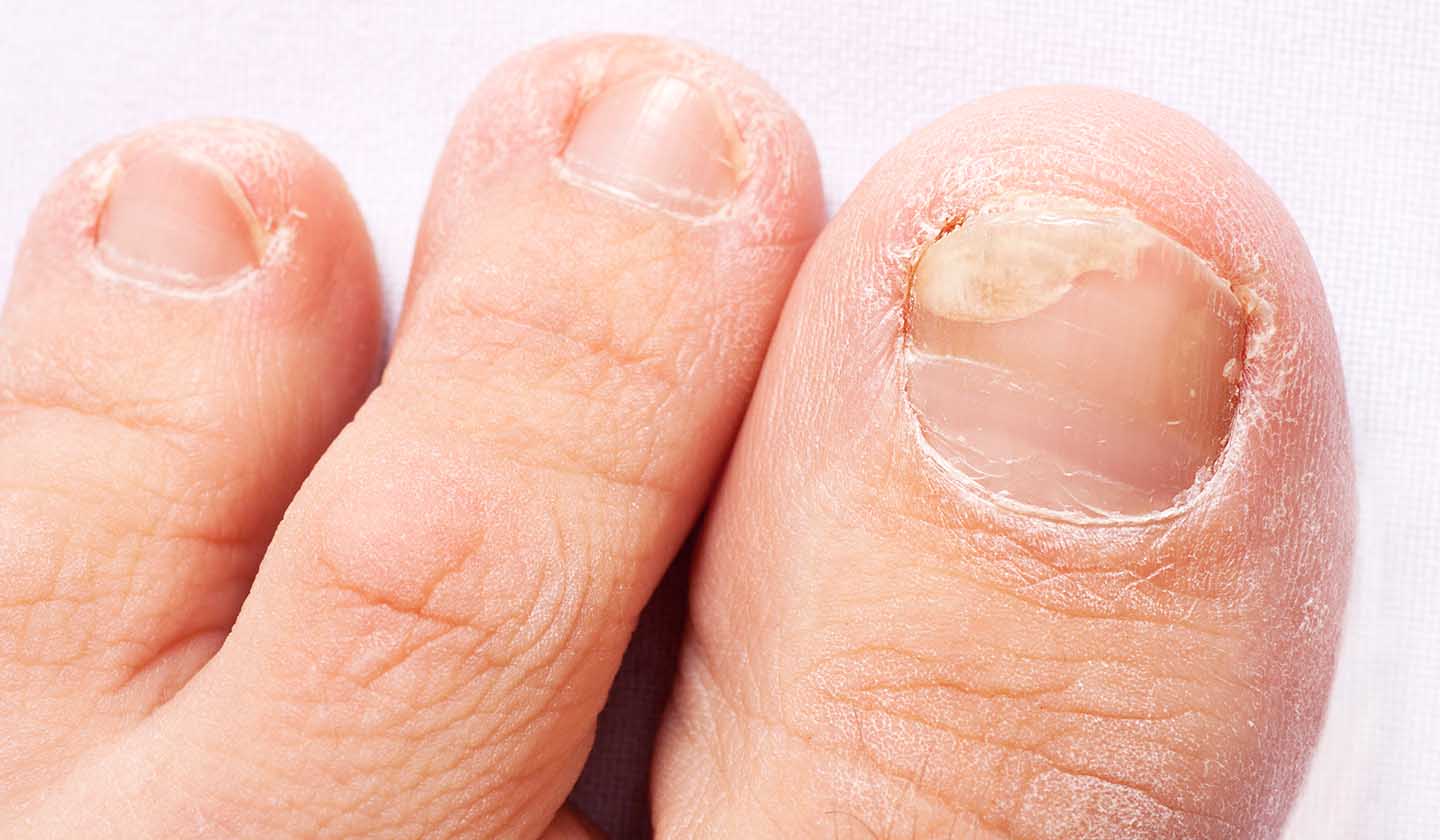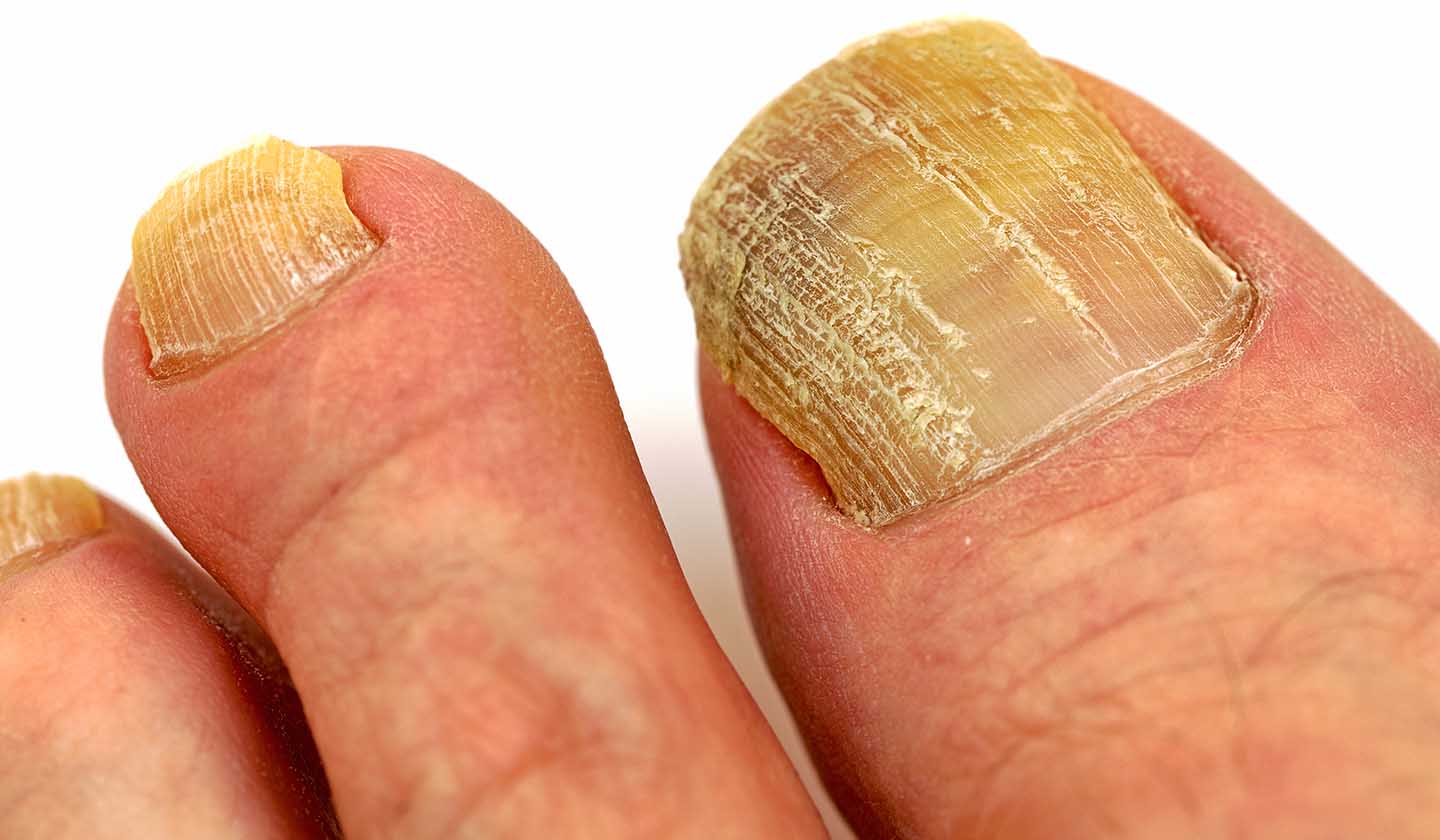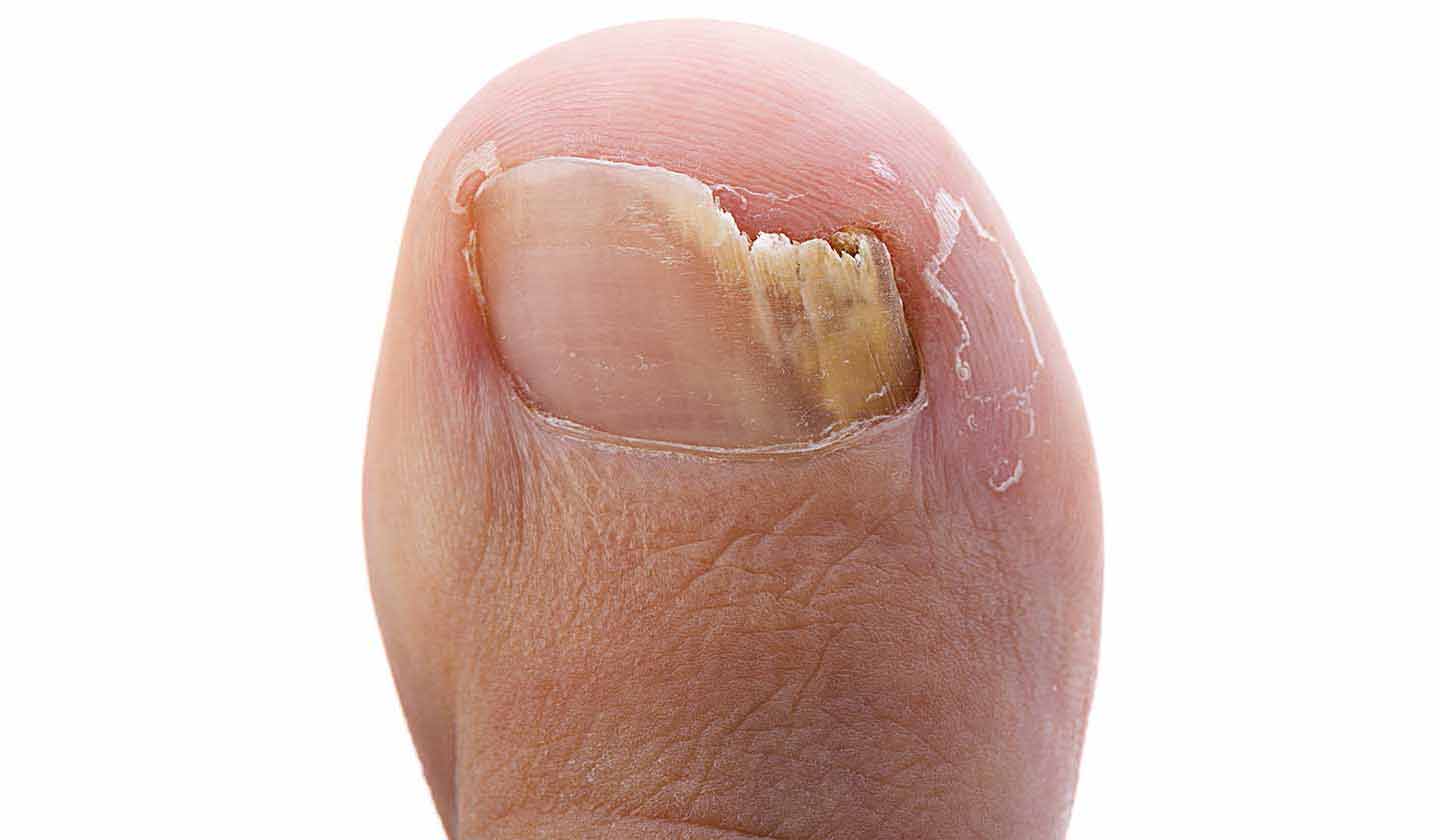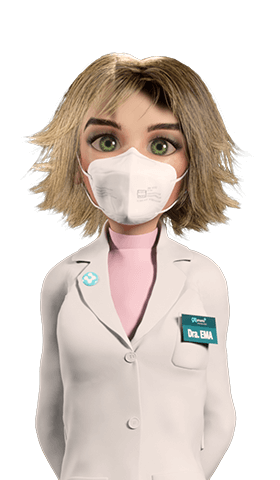Fungus
Don't be discouraged, it is possible to restore your nails and prevent reinfection

Onychomycosis is a fungal infection caused by some types of fungi and yeasts, which affects the nail, and is more common in the toenails than in the fingernails.
It is more frequent in elderly people, especially in men, and may be associated with people with peripheral vascular disease, diabetes, weakened immune system or who suffer frequent trauma to the nails.
Learn how to identify and treat a nail with onychomycosis.
What are the signs on the nails?
Affected nails look abnormal:
- It starts with a small spot on the front or side edge of the nail (spot tends to increase in size);
- Changes in nail colour (yellow, brown, or white);
- The nail becomes thicker and duller;
- The nail gets brittle;
- It can become deformed, starting to crumble;
- The nail may start to pull away from the nail bed beneath.

Treatment
In most people, this situation does not lead to serious complications, being mostly an aesthetic issue.
The treatment aims to eradicate the microorganism, restore the nail, and prevent reinfection.
For the treatment to take effect, it is necessary to ensure total nail renewal (growth of a new nail). As nails tend to grow slowly, this treatment requires time, patience, and persistence.
But do not be discouraged...
Depending on the severity and extent of the nail spot, you can choose to use topical products, topical medications, or oral medications.
Topical products
There are urea-based medical options designed to soften the nail to ensure greater effectiveness in the removal of the fungus when filing the nail.
These products can be found in the form of ointment and solution.
Topical medication
It is generally used when there is no total nail involvement and is indicated for adult individuals with one or two affected nails.
The advantages are safety and negligible adverse reactions and interactions with other drugs.
It is available in in the form of varnish containing a fungicide, amorolfine.
The varnish must be applied once or twice a week.
Once a week, before applying the varnish you should:
- File the affected nail with a disposable emery board file (do not reuse the piece of the file used);
- Clean with a 70º alcohol swab;
- Apply the treatment varnish.
The treatment will take, at least, 6 months for fingernails and 12 months for toenails.
Oral medication
In situations where other therapeutic strategies have been unsuccessful or are inappropriate, for example, in more serious infections (if more than 50% of the nail or multiple nails are affected), oral medications may be needed.
These drugs can only be prescribed by a doctor.

Keep in mind that:
Premature interruption of treatment can lead to the failure of therapy.
How can you prevent it?
Fungi thrive well in moist, warm environments.
So, to avoid reinfection, you should:
- Treat any other fungal infections you may have (for example, athlete's foot).
- Maintain good nail hygiene;
- Dry your feet properly with a towel (especially between the toes);
- Keep your nails trimmed;
- Wear breathable socks (cotton);
- Use appropriate shoes in public areas (such as gym, swimming pool, common showers);
- Replace old shoes (to prevent reinfection);
- In case of onychomycosis in fingernails, gloves should be worn in a moist environment (for example, dish washing).
What you should not do
- Wear shoes that are too tight (to prevent trauma to the nails);
- Apply cosmetic varnishes or artificial nails during treatment;
- Share unsterilised nail clipping objects;
- Walk barefoot in public areas;
- Cut your nails too short.
Sources
iSaúde
Farmácia Distribuição Magazine
Também lhe poderá interessar
Fungus






